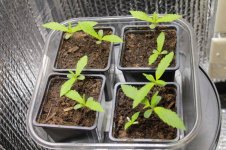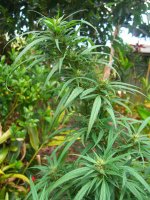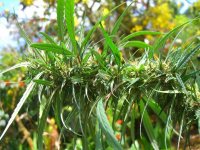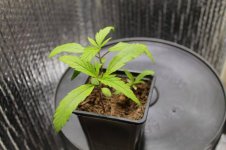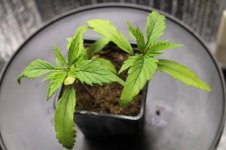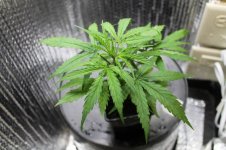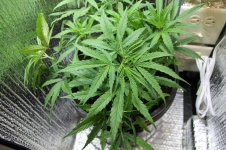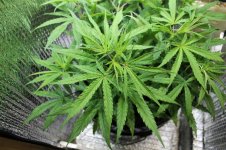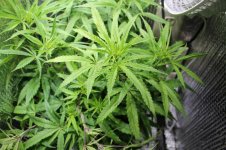Started 12 Swazi seeds stored since January 2011. 10 germinated and 9 survived. Strain is originally from Swaziland but inbred in Hawaii (lower Puna) since the mid 80s. Have had it since the early 90s. Here is a pic (hopefully the attachment shows up). At day 8.
-
Happy Birthday ICMag! Been 20 years since Gypsy Nirvana created the forum! We are celebrating with a 4/20 Giveaway and by launching a new Patreon tier called "420club". You can read more here.
-
Important notice: ICMag's T.O.U. has been updated. Please review it here. For your convenience, it is also available in the main forum menu, under 'Quick Links"!
You are using an out of date browser. It may not display this or other websites correctly.
You should upgrade or use an alternative browser.
You should upgrade or use an alternative browser.
Swazi (IBL Lower Puna )
- Thread starter Lolo94
- Start date
clearheaded
Active member
very cool! keep us posted and smoke report!
Hopefully not. Hopefully people had seed backups and not just clones.Wonder if a lot of old lines were lost down there because of the eruption.
africaseeds
Member
You can check on my profile on albums I have some pics of trees that were grown from seeds from Swaziland. Should be close to what you are growing which is Swazi Gold.
You can check on my profile on albums I have some pics of trees that were grown from seeds from Swaziland. Should be close to what you are growing which is Swazi Gold.
It looks similar, but I've never heard it called gold. The finished plants typically cure to a very light green color. In Hawaii, they grew to 8 feet + normally and harvest was at the end of October to early November. It could also be grown short season unlike the longer sativa's
africaseeds
Member
Over in South Africa it is called Swazi Gold. It is a landrace so you will see many landraces are are reffered to as Something + Gold . Often the area name. For example: "Malawi Gold", "Acapulco gold" etc. Swazi Gold.
valleymicro
New member
Very cool. Are these seeds available anywhere?
Very cool. Are these seeds available anywhere?
As Aficaseeds said, Swazi seeds are still available, however I doubt that they would be exactly the same as this Swazi varietal. Even if it was the same genetics, inbreeding for many years in a particular environment would likely alter some of the traits.
I tried Hawaiian grown White Widow in the 90s and it's effects were much more sativa than an indoor Widow, I tried a decade later on the mainland.
gold from curing methods.........Nev’s old line of Swazi x HP/NL.........grew 8-10 footers of pineapple skank......great gear from 80’s.....
Can I ask how the seeds were stored for all those years?
I've been building my seed stash for our move back to upper Puna in a few years.
Aloha
Seeds are wrapped in aluminum foil, labelled, and placed in a sealed glass jar with white rice in the refrigerator. Can also vacuum seal the jar for very long storage.
Day 42. All plants transplanted into one pot. Light cycle turned down to 11 hours. Should show sex in the next week or so if it behaves as it does outdoors in Hawaii.
First time growing this strain indoors under LED. Putting multiple plants in pot to keep flowering stretch to a minimum.
First time growing this strain indoors under LED. Putting multiple plants in pot to keep flowering stretch to a minimum.
Attachments
Swazi day 64. Just started showing preflowers. 2 females and 1 male so far. Typically the ratio favors females. When I first reproduced these plants in the early 90s, several outdoor sites were dedicated to open pollination seeding. Sites were well dispersed as Green Harvest flew the area heavily then. A couple of the males showed female flowers very late in flowering. No females, however, showed any male flowers. This may have tipped the ratio more to female. In the 2 reproductions since I haven't seen the same pattern with males showing late female flowers. I figured it was due to the change in environment (when first reproduced) from a more tropical lower puna to cooler, wetter, and higher elevation upper Puna.
We'll see what happens indoors.
We'll see what happens indoors.

